"The Gazebo Park School methods are still very unique and progressive. In essence, the Gazebo was inspired by the culture of Esalen and evolved as an early childhood program that implemented aspects of the very alternative programming that adults were experiencing at Esalen." —Jasmine Star Horan
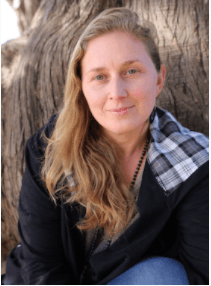
“There was a very vivid sense of freedom, of ability to be myself, to be respected, to be allowed to explore the amazing outdoor environment and my emotional world within myself,” says Jasmine Star Horan about her experience as a student at Esalen Institute’s former early childhood program, Gazebo Park School. “I think ultimately the core teaching was about relationships.”
Jasmine attended the school as a child, and later returned as an adult and teacher. She realized the unique history and philosophy of the program and how deeply it touched so many community members. Thus, Jasmine was inspired to write a book entitled The Gazebo Learning Project, which shares the legacy of this Human Potential pedagogy. She shares more with Esalen News.
Esalen News: What made the school so unique?
Jasmine Star Horan: There really aren't any other programs that match the Gazebo's style. While there are approaches with overlapping concepts such as the Rye method, Patagonia's outdoor education program, unschooling into the grades, or the current Big Sur Park School at Esalen, the Gazebo methods are still very unique and progressive.
In essence, the Gazebo was inspired by the culture of Esalen and evolved as an early childhood program that implemented aspects of the very alternative programming that adults were experiencing at Esalen. For example, Gestalt practice was an element of the Gazebo curriculum that mirrored the Esalen adult teachings by implementing one of the core practices of the community.
There are other elements which make the Gazebo style alternative to mainstream education such as the park-like environment which encourages imagination and connection to nature, the respectful view of the child and the role of the teacher being designed so that the learning is very student-led.
The book includes many quotes from people within the Esalen community about the school. Can you share a few that really stood out?
This book is a documentation of an oral history, and so many community members shared their stories, including numerous former Gazebo teachers and students who went on to become Esalen workshop leaders.
One of the things this highlighted is how much Gazebo inspired them and informed their future work and teaching. There also seems to be a sense from these teachers that Gazebo is a proactive approach that helps children learn in a holistic way—so that there isn't so much repair that needs to be done as adults. Some of the quotes include:
Lucia Horan Drummond, former Gazebo student, 5Rhythms® teacher and my sister, shares about being a Gazebo student by saying: “Kids were learning to be in touch with their emotions and to slow down and express them. We, as Esalen kids, learned good behaviors because we learned how to be in touch with emotions and feel our emotions; we grew up learning skills that other people had to relearn as adults.”
Dorothy Charles, Gestalt practitioner, co-founder of Tribal Ground, former Gazebo teacher and current Esalen workshop leader, is quoted in the book saying, “There was an acknowledgment of the relationship … there was also at first that sense of, 'I am a separate person with boundaries and I have a right to be with you.' It is harder to do it backwards. My business thrives on the fact that it is harder to go the other way. Gazebo is an antidote to that.”
What are several other things that make this kind of education beneficial?
I think ultimately the core teaching is about relationships. I would say the intrapersonal, interpersonal and terrapersonal—how we relate to ourselves, each other and to the Earth. By consciously cultivating emotional intelligence and eco-literacy, children and adults can build skills for the social and ecological activism needed for these times.
This book offers an integral model for how children and adults can mindfully grow together through their physical, spiritual, emotional and neurological learning processes in a nature-based environment. Gazebo Learning Project shares a depth of Esalen wisdom which integrates mind, body and spirit into our approach to education.
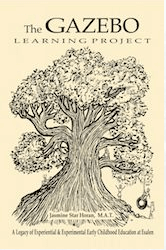
How can the school serve as a model for other schools across the nation?
Gazebo has long been a seed and source of inspiration by which different educators took something of their own growth experience away with them and planted these ideals into other programs or started their own Gazebo-inspired programs. The book outlines ways that the philosophy can be applied intuitively to any situation.
Most of the philosophy of the school has, until now, been passed on through oral tradition. With this book, the specific methods are illuminated for not only educators, but for parents, homeschooling families, therapists, somatic practitioners or those who simply love Esalen. At the intersection of education, parenting and self-inquiry, this is a model of a Human Potential pedagogy which responds to the current moment and how we must rethink the ways we educate children, how we treat each other and the earth.
What was it like for you writing the book?
Writing this book was a labor of love, an act of service, an exercise of not just the mind, but of the heart. Being able to preserve this very unique slice of history and pedagogy has been an honor. It was also very challenging at times and required a lot of sacrifice.
I feel I was in a very unique position to be a catalyst for this work being a former Gazebo student, teacher and now a parent, and was thus granted a lot of trust by the Esalen community. I am just leaning into the fact that this project is complete and I really hope it benefits many people around the world.
How has it been returning to the school as an adult to teach?
After receiving a Master's degree in teaching, I came back to Big Sur and started teaching at Gazebo. At that point, I came to realize how unique my own early education had been. I also saw that things were changing, and there was a risk of the pedagogy being lost.
I wanted to encapsulate and distill its essence for many to be able to learn from. So, I started the Gazebo Writing Project and spent many years researching and writing and joining my own passions as both a teacher and a writer.
To learn more or to purchase ‘The Gazebo Learning Project,’ visit http://www.silverpeakpress.com.
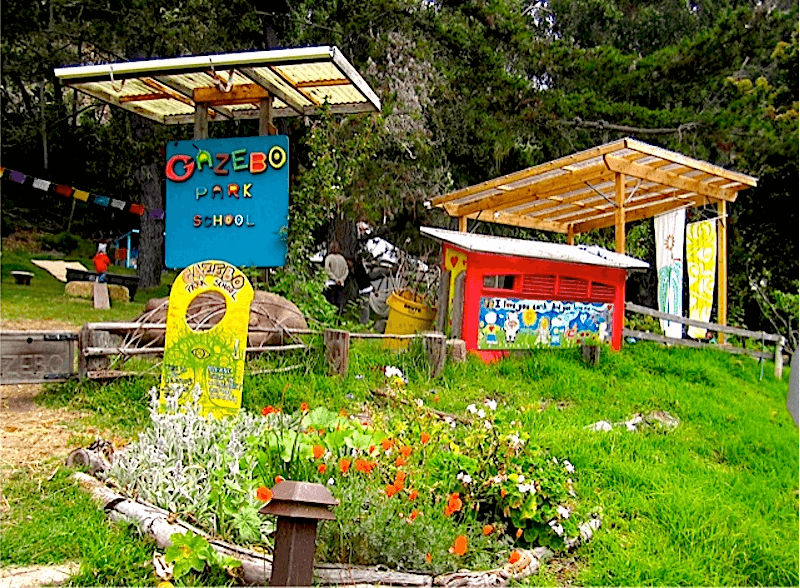
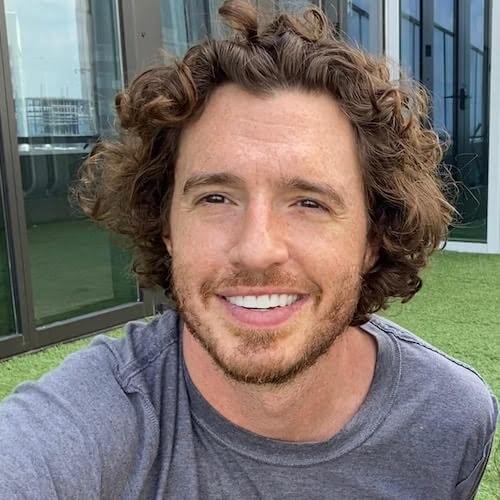
“Remembering to be as self compassionate as I can and praying to the divine that we're all a part of.”
–Aaron
“Prayer, reading, meditation, walking.”
–Karen
“Erratically — which is an ongoing stream of practice to find peace.”
–Charles
“Try on a daily basis to be kind to myself and to realize that making mistakes is a part of the human condition. Learning from our mistakes is a journey. But it starts with compassion and caring. First for oneself.”
–Steve
“Physically: aerobic exercise, volleyball, ice hockey, cycling, sailing. Emotionally: unfortunately I have to work to ‘not care’ about people or situations which may end painfully. Along the lines of ‘attachment is the source of suffering’, so best to avoid it or limit its scope. Sad though because it could also be the source of great joy. Is it worth the risk?“
–Rainer
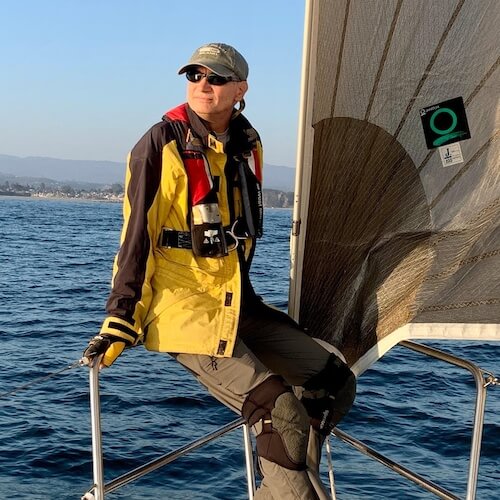

“It's time for my heart to be nurtured on one level yet contained on another. To go easy on me and to allow my feelings to be validated, not judged harshly. On the other hand, to let the heart rule with equanimity and not lead the mind and body around like a master.”
–Suzanne
“I spend time thinking of everything I am grateful for, and I try to develop my ability to express compassion for myself and others without reservation. I take time to do the things I need to do to keep myself healthy and happy. This includes taking experiential workshops, fostering relationships, and participating within groups which have a similar interest to become a more compassionate and fulfilled being.“
–Peter
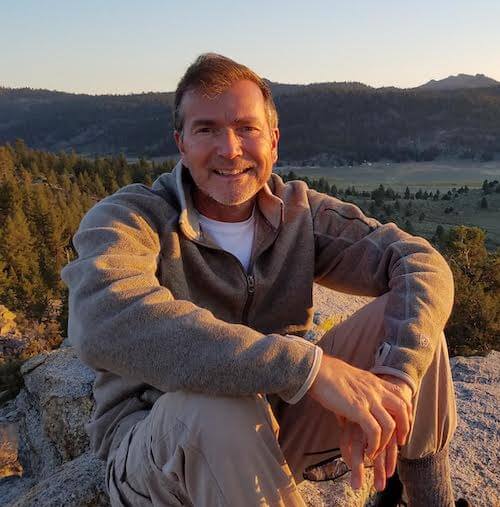
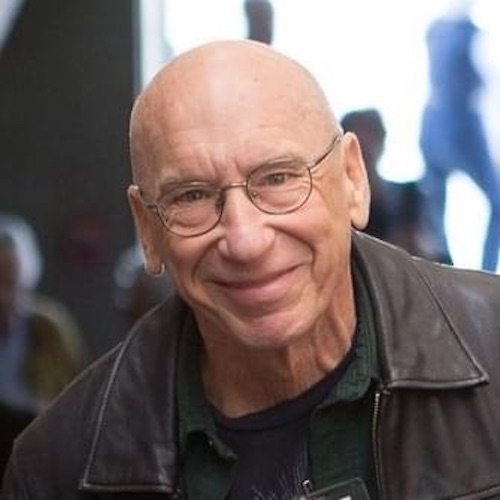
“Self-forgiveness for my own judgments. And oh yeah, coming to Esalen.”
–David B.
“Hmm, this is a tough one! I guess I take care of my heart through fostering relationships with people I feel connected to. Spending quality time with them (whether we're on the phone, through messages/letters, on Zoom, or in-person). Being there for them, listening to them, sharing what's going on with me, my struggles and my successes... like we do in the Esalen weekly Friends of Esalen Zoom sessions!”
–Lori

“I remind myself in many ways of the fact that " Love is all there is!" LOVE is the prize and this one precious life is the stage we get to learn our lessons. I get out into nature, hike, camp, river kayak, fly fish, garden, I create, I dance (not enough!), and I remain grateful for each day, each breath, each moment. Being in the moment, awake, and remembering the gift of life and my feeling of gratitude for all of creation.”
–Steven
“My physical heart by limiting stress and eating a heart-healthy diet. My emotional heart by staying in love with the world and by knowing that all disappointment and loss will pass.“
–David Z.
Today, September 29, is World Heart Day. Strike up a conversation with your own heart and as you feel comfortable, encourage others to do the same. As part of our own transformations and self-care, we sometimes ask for others to illuminate and enliven our hearts or speak our love language.
What if we could do this for ourselves too, even if just for today… or to start a heart practice, forever?
"The Gazebo Park School methods are still very unique and progressive. In essence, the Gazebo was inspired by the culture of Esalen and evolved as an early childhood program that implemented aspects of the very alternative programming that adults were experiencing at Esalen." —Jasmine Star Horan

“There was a very vivid sense of freedom, of ability to be myself, to be respected, to be allowed to explore the amazing outdoor environment and my emotional world within myself,” says Jasmine Star Horan about her experience as a student at Esalen Institute’s former early childhood program, Gazebo Park School. “I think ultimately the core teaching was about relationships.”
Jasmine attended the school as a child, and later returned as an adult and teacher. She realized the unique history and philosophy of the program and how deeply it touched so many community members. Thus, Jasmine was inspired to write a book entitled The Gazebo Learning Project, which shares the legacy of this Human Potential pedagogy. She shares more with Esalen News.
Esalen News: What made the school so unique?
Jasmine Star Horan: There really aren't any other programs that match the Gazebo's style. While there are approaches with overlapping concepts such as the Rye method, Patagonia's outdoor education program, unschooling into the grades, or the current Big Sur Park School at Esalen, the Gazebo methods are still very unique and progressive.
In essence, the Gazebo was inspired by the culture of Esalen and evolved as an early childhood program that implemented aspects of the very alternative programming that adults were experiencing at Esalen. For example, Gestalt practice was an element of the Gazebo curriculum that mirrored the Esalen adult teachings by implementing one of the core practices of the community.
There are other elements which make the Gazebo style alternative to mainstream education such as the park-like environment which encourages imagination and connection to nature, the respectful view of the child and the role of the teacher being designed so that the learning is very student-led.
The book includes many quotes from people within the Esalen community about the school. Can you share a few that really stood out?
This book is a documentation of an oral history, and so many community members shared their stories, including numerous former Gazebo teachers and students who went on to become Esalen workshop leaders.
One of the things this highlighted is how much Gazebo inspired them and informed their future work and teaching. There also seems to be a sense from these teachers that Gazebo is a proactive approach that helps children learn in a holistic way—so that there isn't so much repair that needs to be done as adults. Some of the quotes include:
Lucia Horan Drummond, former Gazebo student, 5Rhythms® teacher and my sister, shares about being a Gazebo student by saying: “Kids were learning to be in touch with their emotions and to slow down and express them. We, as Esalen kids, learned good behaviors because we learned how to be in touch with emotions and feel our emotions; we grew up learning skills that other people had to relearn as adults.”
Dorothy Charles, Gestalt practitioner, co-founder of Tribal Ground, former Gazebo teacher and current Esalen workshop leader, is quoted in the book saying, “There was an acknowledgment of the relationship … there was also at first that sense of, 'I am a separate person with boundaries and I have a right to be with you.' It is harder to do it backwards. My business thrives on the fact that it is harder to go the other way. Gazebo is an antidote to that.”
What are several other things that make this kind of education beneficial?
I think ultimately the core teaching is about relationships. I would say the intrapersonal, interpersonal and terrapersonal—how we relate to ourselves, each other and to the Earth. By consciously cultivating emotional intelligence and eco-literacy, children and adults can build skills for the social and ecological activism needed for these times.
This book offers an integral model for how children and adults can mindfully grow together through their physical, spiritual, emotional and neurological learning processes in a nature-based environment. Gazebo Learning Project shares a depth of Esalen wisdom which integrates mind, body and spirit into our approach to education.

How can the school serve as a model for other schools across the nation?
Gazebo has long been a seed and source of inspiration by which different educators took something of their own growth experience away with them and planted these ideals into other programs or started their own Gazebo-inspired programs. The book outlines ways that the philosophy can be applied intuitively to any situation.
Most of the philosophy of the school has, until now, been passed on through oral tradition. With this book, the specific methods are illuminated for not only educators, but for parents, homeschooling families, therapists, somatic practitioners or those who simply love Esalen. At the intersection of education, parenting and self-inquiry, this is a model of a Human Potential pedagogy which responds to the current moment and how we must rethink the ways we educate children, how we treat each other and the earth.
What was it like for you writing the book?
Writing this book was a labor of love, an act of service, an exercise of not just the mind, but of the heart. Being able to preserve this very unique slice of history and pedagogy has been an honor. It was also very challenging at times and required a lot of sacrifice.
I feel I was in a very unique position to be a catalyst for this work being a former Gazebo student, teacher and now a parent, and was thus granted a lot of trust by the Esalen community. I am just leaning into the fact that this project is complete and I really hope it benefits many people around the world.
How has it been returning to the school as an adult to teach?
After receiving a Master's degree in teaching, I came back to Big Sur and started teaching at Gazebo. At that point, I came to realize how unique my own early education had been. I also saw that things were changing, and there was a risk of the pedagogy being lost.
I wanted to encapsulate and distill its essence for many to be able to learn from. So, I started the Gazebo Writing Project and spent many years researching and writing and joining my own passions as both a teacher and a writer.
To learn more or to purchase ‘The Gazebo Learning Project,’ visit http://www.silverpeakpress.com.


“Remembering to be as self compassionate as I can and praying to the divine that we're all a part of.”
–Aaron
“Prayer, reading, meditation, walking.”
–Karen
“Erratically — which is an ongoing stream of practice to find peace.”
–Charles
“Try on a daily basis to be kind to myself and to realize that making mistakes is a part of the human condition. Learning from our mistakes is a journey. But it starts with compassion and caring. First for oneself.”
–Steve
“Physically: aerobic exercise, volleyball, ice hockey, cycling, sailing. Emotionally: unfortunately I have to work to ‘not care’ about people or situations which may end painfully. Along the lines of ‘attachment is the source of suffering’, so best to avoid it or limit its scope. Sad though because it could also be the source of great joy. Is it worth the risk?“
–Rainer


“It's time for my heart to be nurtured on one level yet contained on another. To go easy on me and to allow my feelings to be validated, not judged harshly. On the other hand, to let the heart rule with equanimity and not lead the mind and body around like a master.”
–Suzanne
“I spend time thinking of everything I am grateful for, and I try to develop my ability to express compassion for myself and others without reservation. I take time to do the things I need to do to keep myself healthy and happy. This includes taking experiential workshops, fostering relationships, and participating within groups which have a similar interest to become a more compassionate and fulfilled being.“
–Peter


“Self-forgiveness for my own judgments. And oh yeah, coming to Esalen.”
–David B.
“Hmm, this is a tough one! I guess I take care of my heart through fostering relationships with people I feel connected to. Spending quality time with them (whether we're on the phone, through messages/letters, on Zoom, or in-person). Being there for them, listening to them, sharing what's going on with me, my struggles and my successes... like we do in the Esalen weekly Friends of Esalen Zoom sessions!”
–Lori

“I remind myself in many ways of the fact that " Love is all there is!" LOVE is the prize and this one precious life is the stage we get to learn our lessons. I get out into nature, hike, camp, river kayak, fly fish, garden, I create, I dance (not enough!), and I remain grateful for each day, each breath, each moment. Being in the moment, awake, and remembering the gift of life and my feeling of gratitude for all of creation.”
–Steven
“My physical heart by limiting stress and eating a heart-healthy diet. My emotional heart by staying in love with the world and by knowing that all disappointment and loss will pass.“
–David Z.
Today, September 29, is World Heart Day. Strike up a conversation with your own heart and as you feel comfortable, encourage others to do the same. As part of our own transformations and self-care, we sometimes ask for others to illuminate and enliven our hearts or speak our love language.
What if we could do this for ourselves too, even if just for today… or to start a heart practice, forever?
"The Gazebo Park School methods are still very unique and progressive. In essence, the Gazebo was inspired by the culture of Esalen and evolved as an early childhood program that implemented aspects of the very alternative programming that adults were experiencing at Esalen." —Jasmine Star Horan

“There was a very vivid sense of freedom, of ability to be myself, to be respected, to be allowed to explore the amazing outdoor environment and my emotional world within myself,” says Jasmine Star Horan about her experience as a student at Esalen Institute’s former early childhood program, Gazebo Park School. “I think ultimately the core teaching was about relationships.”
Jasmine attended the school as a child, and later returned as an adult and teacher. She realized the unique history and philosophy of the program and how deeply it touched so many community members. Thus, Jasmine was inspired to write a book entitled The Gazebo Learning Project, which shares the legacy of this Human Potential pedagogy. She shares more with Esalen News.
Esalen News: What made the school so unique?
Jasmine Star Horan: There really aren't any other programs that match the Gazebo's style. While there are approaches with overlapping concepts such as the Rye method, Patagonia's outdoor education program, unschooling into the grades, or the current Big Sur Park School at Esalen, the Gazebo methods are still very unique and progressive.
In essence, the Gazebo was inspired by the culture of Esalen and evolved as an early childhood program that implemented aspects of the very alternative programming that adults were experiencing at Esalen. For example, Gestalt practice was an element of the Gazebo curriculum that mirrored the Esalen adult teachings by implementing one of the core practices of the community.
There are other elements which make the Gazebo style alternative to mainstream education such as the park-like environment which encourages imagination and connection to nature, the respectful view of the child and the role of the teacher being designed so that the learning is very student-led.
The book includes many quotes from people within the Esalen community about the school. Can you share a few that really stood out?
This book is a documentation of an oral history, and so many community members shared their stories, including numerous former Gazebo teachers and students who went on to become Esalen workshop leaders.
One of the things this highlighted is how much Gazebo inspired them and informed their future work and teaching. There also seems to be a sense from these teachers that Gazebo is a proactive approach that helps children learn in a holistic way—so that there isn't so much repair that needs to be done as adults. Some of the quotes include:
Lucia Horan Drummond, former Gazebo student, 5Rhythms® teacher and my sister, shares about being a Gazebo student by saying: “Kids were learning to be in touch with their emotions and to slow down and express them. We, as Esalen kids, learned good behaviors because we learned how to be in touch with emotions and feel our emotions; we grew up learning skills that other people had to relearn as adults.”
Dorothy Charles, Gestalt practitioner, co-founder of Tribal Ground, former Gazebo teacher and current Esalen workshop leader, is quoted in the book saying, “There was an acknowledgment of the relationship … there was also at first that sense of, 'I am a separate person with boundaries and I have a right to be with you.' It is harder to do it backwards. My business thrives on the fact that it is harder to go the other way. Gazebo is an antidote to that.”
What are several other things that make this kind of education beneficial?
I think ultimately the core teaching is about relationships. I would say the intrapersonal, interpersonal and terrapersonal—how we relate to ourselves, each other and to the Earth. By consciously cultivating emotional intelligence and eco-literacy, children and adults can build skills for the social and ecological activism needed for these times.
This book offers an integral model for how children and adults can mindfully grow together through their physical, spiritual, emotional and neurological learning processes in a nature-based environment. Gazebo Learning Project shares a depth of Esalen wisdom which integrates mind, body and spirit into our approach to education.

How can the school serve as a model for other schools across the nation?
Gazebo has long been a seed and source of inspiration by which different educators took something of their own growth experience away with them and planted these ideals into other programs or started their own Gazebo-inspired programs. The book outlines ways that the philosophy can be applied intuitively to any situation.
Most of the philosophy of the school has, until now, been passed on through oral tradition. With this book, the specific methods are illuminated for not only educators, but for parents, homeschooling families, therapists, somatic practitioners or those who simply love Esalen. At the intersection of education, parenting and self-inquiry, this is a model of a Human Potential pedagogy which responds to the current moment and how we must rethink the ways we educate children, how we treat each other and the earth.
What was it like for you writing the book?
Writing this book was a labor of love, an act of service, an exercise of not just the mind, but of the heart. Being able to preserve this very unique slice of history and pedagogy has been an honor. It was also very challenging at times and required a lot of sacrifice.
I feel I was in a very unique position to be a catalyst for this work being a former Gazebo student, teacher and now a parent, and was thus granted a lot of trust by the Esalen community. I am just leaning into the fact that this project is complete and I really hope it benefits many people around the world.
How has it been returning to the school as an adult to teach?
After receiving a Master's degree in teaching, I came back to Big Sur and started teaching at Gazebo. At that point, I came to realize how unique my own early education had been. I also saw that things were changing, and there was a risk of the pedagogy being lost.
I wanted to encapsulate and distill its essence for many to be able to learn from. So, I started the Gazebo Writing Project and spent many years researching and writing and joining my own passions as both a teacher and a writer.
To learn more or to purchase ‘The Gazebo Learning Project,’ visit http://www.silverpeakpress.com.


“Remembering to be as self compassionate as I can and praying to the divine that we're all a part of.”
–Aaron
“Prayer, reading, meditation, walking.”
–Karen
“Erratically — which is an ongoing stream of practice to find peace.”
–Charles
“Try on a daily basis to be kind to myself and to realize that making mistakes is a part of the human condition. Learning from our mistakes is a journey. But it starts with compassion and caring. First for oneself.”
–Steve
“Physically: aerobic exercise, volleyball, ice hockey, cycling, sailing. Emotionally: unfortunately I have to work to ‘not care’ about people or situations which may end painfully. Along the lines of ‘attachment is the source of suffering’, so best to avoid it or limit its scope. Sad though because it could also be the source of great joy. Is it worth the risk?“
–Rainer


“It's time for my heart to be nurtured on one level yet contained on another. To go easy on me and to allow my feelings to be validated, not judged harshly. On the other hand, to let the heart rule with equanimity and not lead the mind and body around like a master.”
–Suzanne
“I spend time thinking of everything I am grateful for, and I try to develop my ability to express compassion for myself and others without reservation. I take time to do the things I need to do to keep myself healthy and happy. This includes taking experiential workshops, fostering relationships, and participating within groups which have a similar interest to become a more compassionate and fulfilled being.“
–Peter


“Self-forgiveness for my own judgments. And oh yeah, coming to Esalen.”
–David B.
“Hmm, this is a tough one! I guess I take care of my heart through fostering relationships with people I feel connected to. Spending quality time with them (whether we're on the phone, through messages/letters, on Zoom, or in-person). Being there for them, listening to them, sharing what's going on with me, my struggles and my successes... like we do in the Esalen weekly Friends of Esalen Zoom sessions!”
–Lori

“I remind myself in many ways of the fact that " Love is all there is!" LOVE is the prize and this one precious life is the stage we get to learn our lessons. I get out into nature, hike, camp, river kayak, fly fish, garden, I create, I dance (not enough!), and I remain grateful for each day, each breath, each moment. Being in the moment, awake, and remembering the gift of life and my feeling of gratitude for all of creation.”
–Steven
“My physical heart by limiting stress and eating a heart-healthy diet. My emotional heart by staying in love with the world and by knowing that all disappointment and loss will pass.“
–David Z.
Today, September 29, is World Heart Day. Strike up a conversation with your own heart and as you feel comfortable, encourage others to do the same. As part of our own transformations and self-care, we sometimes ask for others to illuminate and enliven our hearts or speak our love language.
What if we could do this for ourselves too, even if just for today… or to start a heart practice, forever?